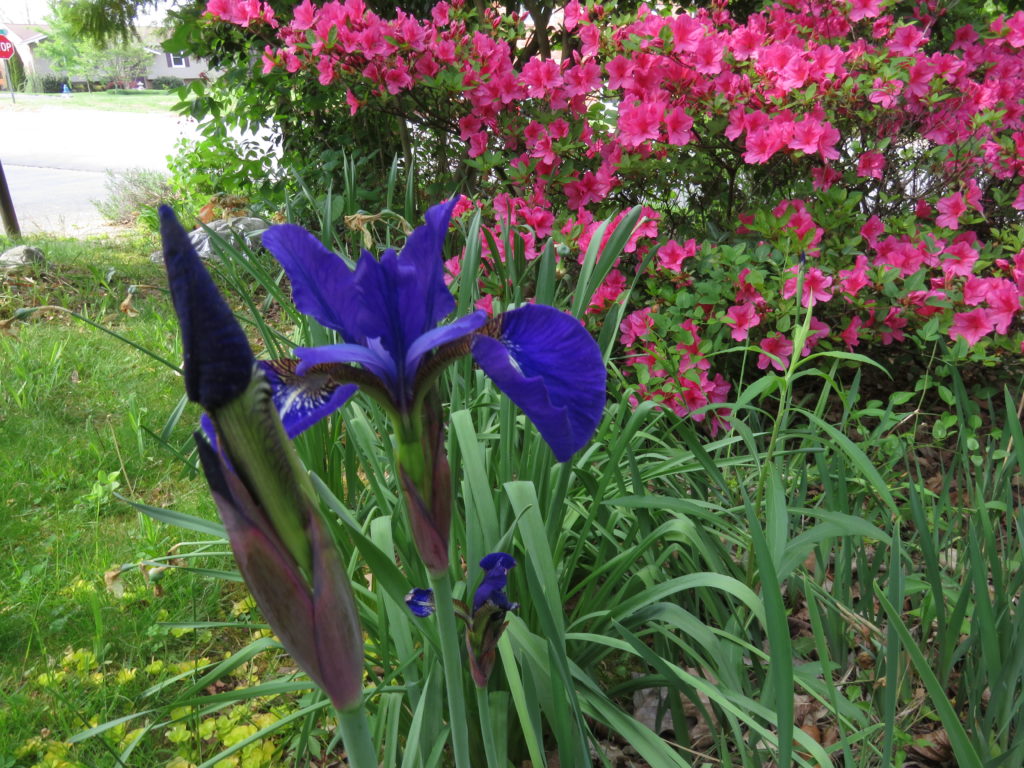Tall bearded (Iris x hybrida), Japanese iris (I. ensata), Siberian irises (I. sibirica) are very popular with U.S. gardeners and are favorites in my spring flower garden (USDA hardiness zones 3-9). The period from late August through mid-October is the ideal time to plant and/or divide irises. Don’t procrastinate…the earlier the better. Give plants enough time to settle in before winter arrives. In zone 5 the planting job should be completed by late September, in zone 6 by mid-October, and in zones 7-9 by early November.

Choose from hundreds of colorful varieties to add to your garden for years to come. Some tall bearded varieties are repeat-blooming in April/May and again in late summer / fall. You may want to trade varieties with neighbors and gardening friends. In the spring irises are for sale in pots at local garden shops. In the fall unsold plants are often discounted, sometimes at half price.
An iris bed should be sited in full to partial sun (5 hours minimum of direct sun) and in compost-rich, mildly acidic, well-drained soil. Plant iris shallow, barely covering the top thick roots (rhizomes). Next, cover those rhizomes lightly with a 1-2 inch layer of pine needles or shredded pine bark mulch. Feed irises a 5-10-10 or 6-10-6 fertilizer in early spring when new growth emerges. Avoid using high nitrogen products. Adding bone meal at planting time is encouraged.
Every 3-5 years, dig up and divide iris clumps. You may need to slice through their densely matted roots with a sharp ax or knife. Select primarily the vigorous clumps of rhizomes and wash off the soil with a hose. Set the individual iris fans 6-12 inches apart. When dividing in the fall, trim back iris foliage by one-half for easier handling.
Throw away old, weak rhizomes from the center of the original clump. Remove unhealthy plants and toss them in the trash bin. Do not add diseased or insect-ridden plants to the compost pile.


 Posted in
Posted in 
